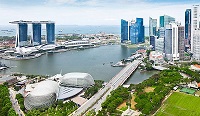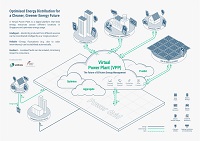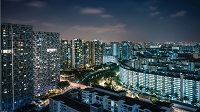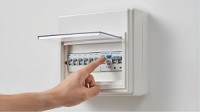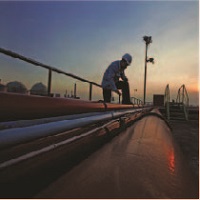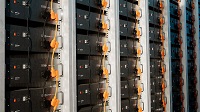Lorem Ipsum is simply dummy text of the printing and typesetting industry. Lorem Ipsum has been the industry's standard dummy text ever since the 1500s, when an unknown printer took a galley of type and scrambled it to make a type specimen book. It has survived not only five centuries, but also the leap into electronic typesetting, remaining essentially unchanged. It was popularised in the 1960s with the release of Letraset sheets containing Lorem Ipsum passages, and more recently with desktop publishing software like Aldus PageMaker including versions of Lorem Ipsum.
A Singapore Government Agency WebsiteHow to identify
Official website links end with .gov.sg
Government agencies communicate via .gov.sg websites
(e.g. go.gov.sg/open).Trusted websites
Secure websites use HTTPS
Look for a lock ( )or https:// as an added precaution. Share sensitive information only on official, secure websites.
- About EMA
- Our Energy Story
- Consumer Information
- Regulations & Licences
- News & Events
- Partnerships
About EMA
Who We Are
Learn about EMA’s leadership, milestones and accomplishments.
Join Us
Explore the career, scholarship and internship opportunities available in EMA.
Our Energy Story
Overview
Discover how the Singapore Energy Story sets the vision towards a net-zero energy future.
Energy Supply
Gain insights into the four switches that power Singapore’s economy and our daily lives.
Energy Demand
Discover ways to enhance energy efficiency and lower your carbon footprint.
Energy Grid
Explore how EMA ensures a reliable and secure energy supply for everyone.
Energy Market Landscape
Learn about the intricacies of Singapore’s energy market structure and operations.
Consumer Information
Electricity
Get tips on buying electricity and protecting your family from electrical hazards.
Gas
Learn about purchasing gas and safeguarding your family against gas hazards.
Solar
Access information on installing solar panels at your home and selling excess electricity to the national grid.
Regulations & Licences
Regulations
Stay up-to-date with the latest regulations, policies and frameworks governing the energy sector.
Licences
Learn about the licences that EMA issues to different stakeholders in the energy sector.
Regulatory Publications
Read about the Codes of Practice and Circulars that EMA publishes to regulate the energy sector.
Partnerships
Calls for Proposal
Collaborate with EMA in co-creating innovative solutions for the energy sector.
Consultations
Give your comments and feedback on EMA’s policies and regulations.
R&D Engagements
Discover how EMA works with stakeholders to catalyse new and innovative digital technologies.
Talent Development
Learn about EMA’s efforts in nurturing talent and cultivate interest in the energy sector.
eSERVICES
Get quick access to EMA’s services for application of worker licences, scholarships and more.
Industry Sector:
Decision
Final Decision Paper
Supporting Documnets
Update
The consultation has closed for comments.
Consultations
This consultation exercise is to seek views from the industry on the options for Singapore’s future liquefied natural gas (LNG) import framework, beyond the 3 million tonnes per annum (Mtpa) franchise with BG Asia Pacific Pte Limited (now named BGSingapore Gas Marketing Pte Ltd) (BG). The objectives of the new framework are to enhance Singapore’s energy security and improve price competitiveness for our natural gas supplies.
Today, more than 80% of Singapore’s electricity is fuelled by piped natural gas (PNG).Major industries in the petrochemicals, electronics and biomedical sectors have also become increasingly dependent on natural gas for their production needs. In August 2006, the Government announced its plan to import LNG to meet futurerising demand for energy and introduced controls on PNG imports to allow the build up ofLNG demand until the capacity of 3 Mtpa is reached or in 2018, whichever is earlier.
The Government decided to conduct the initial LNG procurement for Singapore through an Aggregator. The role of the Aggregator was to consolidate demand for regasified LNG from end users of gas in Singapore and to procure LNG supply for theseend users. The Aggregator would have an exclusive licence to import LNG and sell regasified LNG in Singapore for a demand of up to 3 Mtpa or 2023, whichever is earlier. On 18 April 2008, the Energy Market Authority (EMA) appointed BG as the LNG Aggregator through a competitive Request-for-Proposal (RFP) process. As of end February 2012, BG has contracted a total of 2.65 Mtpa of LNG in Singapore. BG expects to reach its franchise of 3 Mtpa of LNG sales in either 2012 or 2013.
Singapore will begin importing LNG when the country’s first LNG regasification terminal commences commercial operations in 2Q 2013. Singapore’s total demand for gascould eventually increase to about 15 Mtpa by 2024. The LNG terminal on Jurong Island is able to accommodate 7 storage tanks when fully expanded and would be able to meet this demand. Industry experience and analysis suggest that the LNG Terminal can accommodate up to 4 large LNG importers without affecting its ability to effectively deliver 15 Mtpa of capacity throughput. If there are more than 4 importers, there could be operational constraints and inefficiencies which will lower the terminal’s throughput capacity. Based on this consideration, EMA is of the view that it may not be feasible for Singapore toaccommodate a model based on complete open access with many entities importing small quantities of LNG to meet their own needs.
Based on studies of other countries’ experiences and preliminary discussions with industry players, two possible frameworks have been identified in this consultation paperwhich the EMA would like to seek further feedback and comments. These are theRegulated Sole Importer model (or “BG+1”) and the Multiple Aggregators model (or“BG+3”). Please refer to the consultation paper for more details.
Submit Responses
Please submit written feedback to EMA_RD_LNGD@ema.gov.sg by 30 June 2012 (5pm). Alternatively, you may send the feedback by post/fax to:
LNG Department
Regulation Division, Energy Market Authority
991G Alexandra Road, #01-29
Singapore 119975
Fax: (65) 6835 8020
Download
Industry Sector:
Tags
Share
